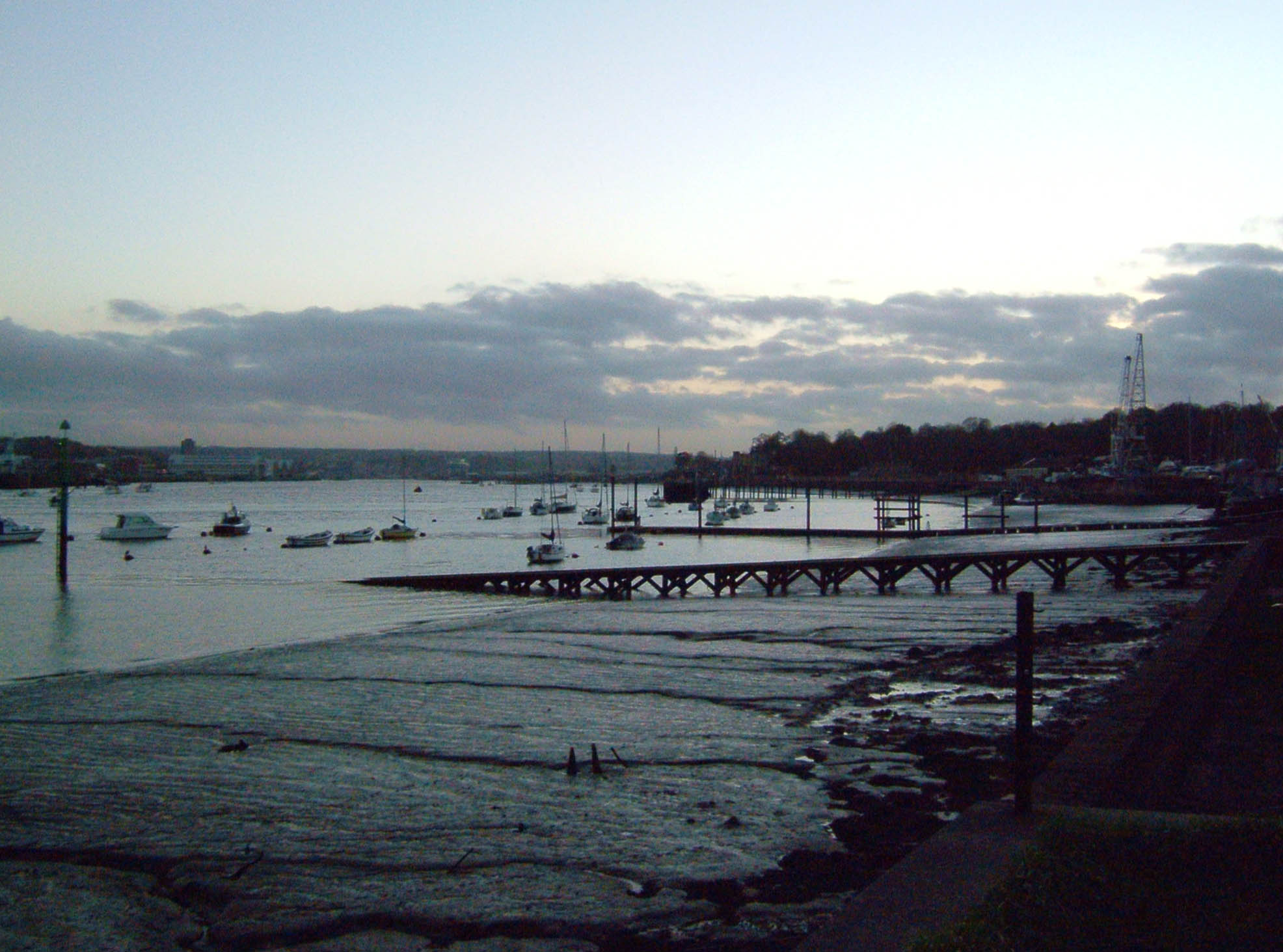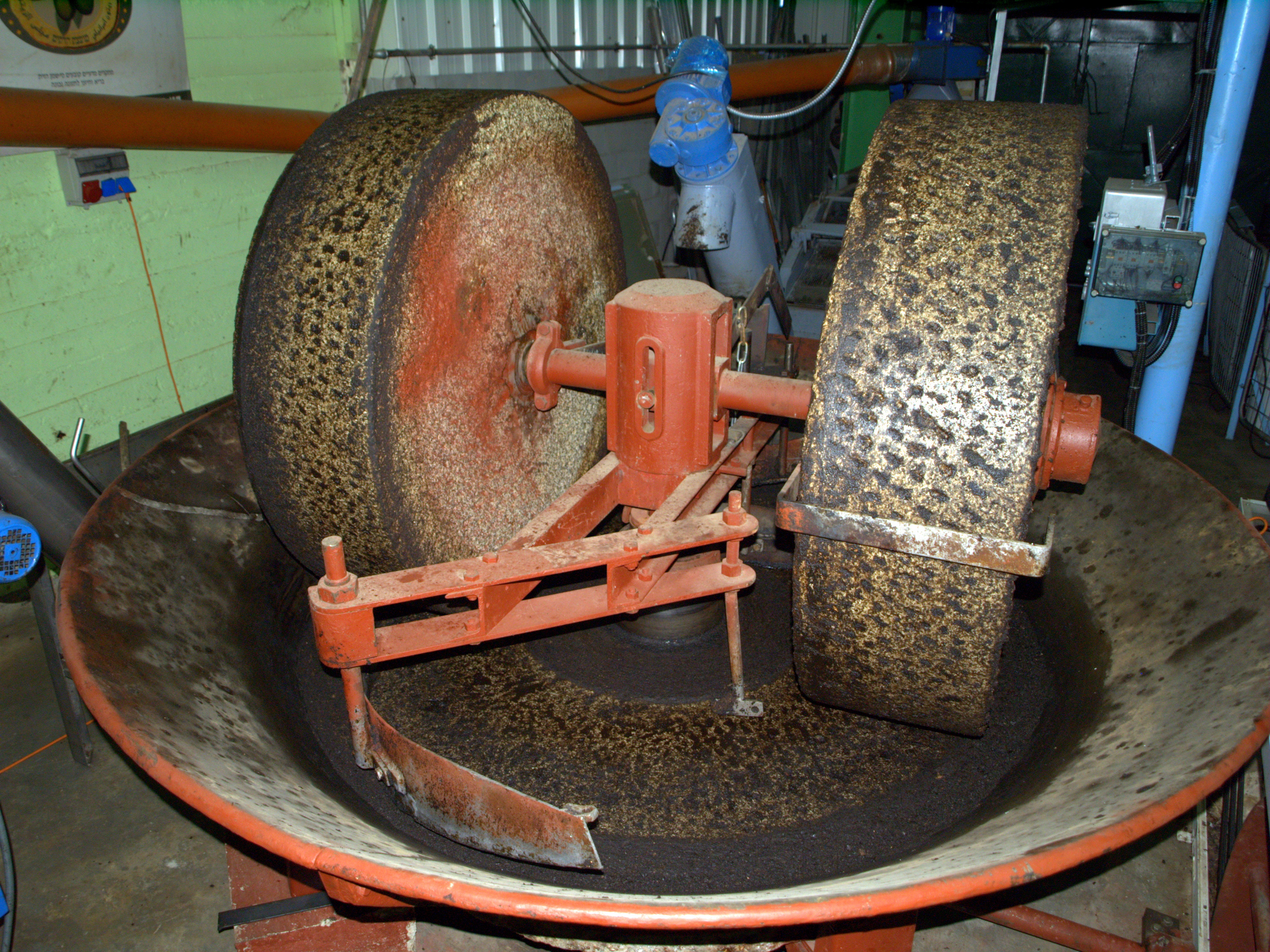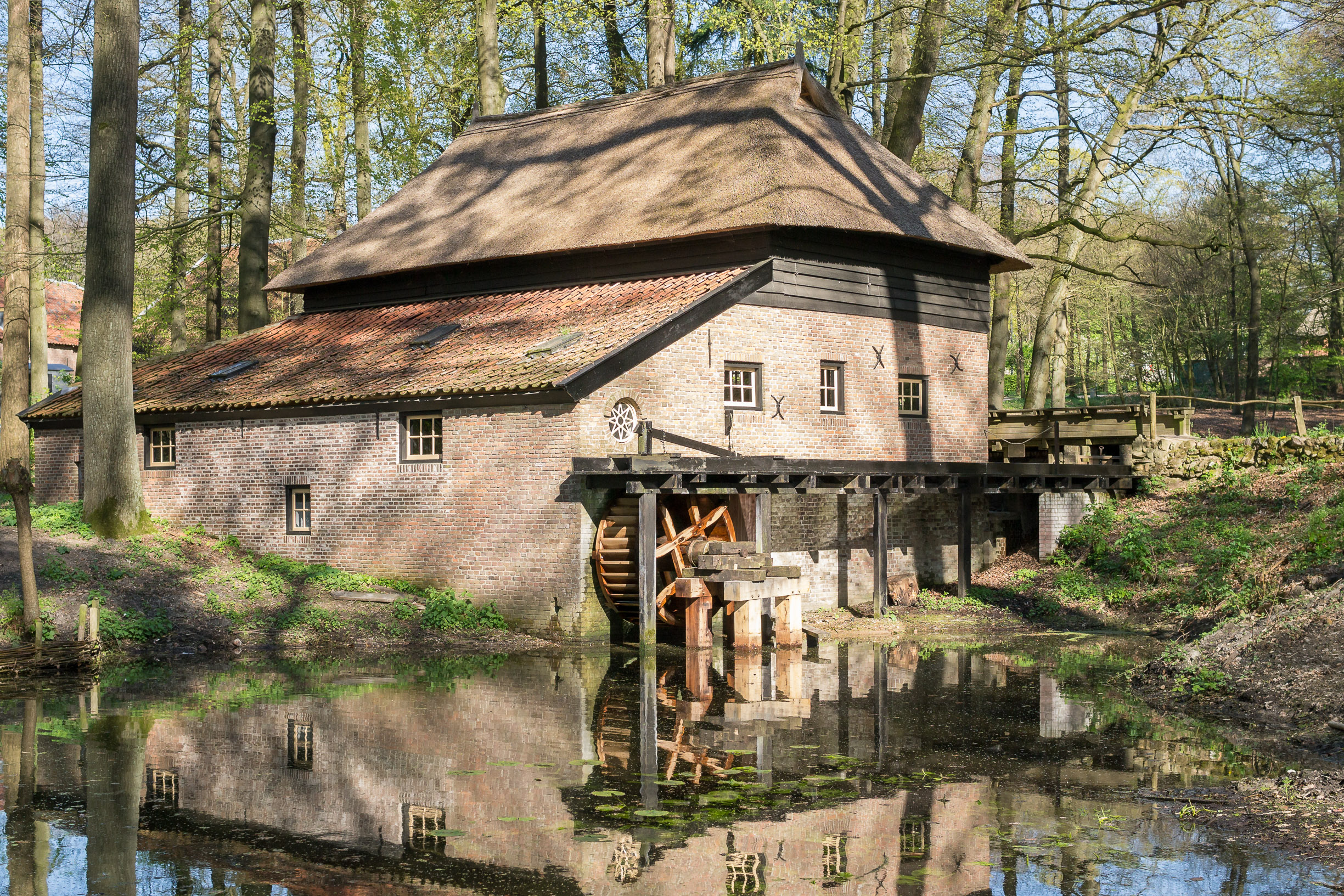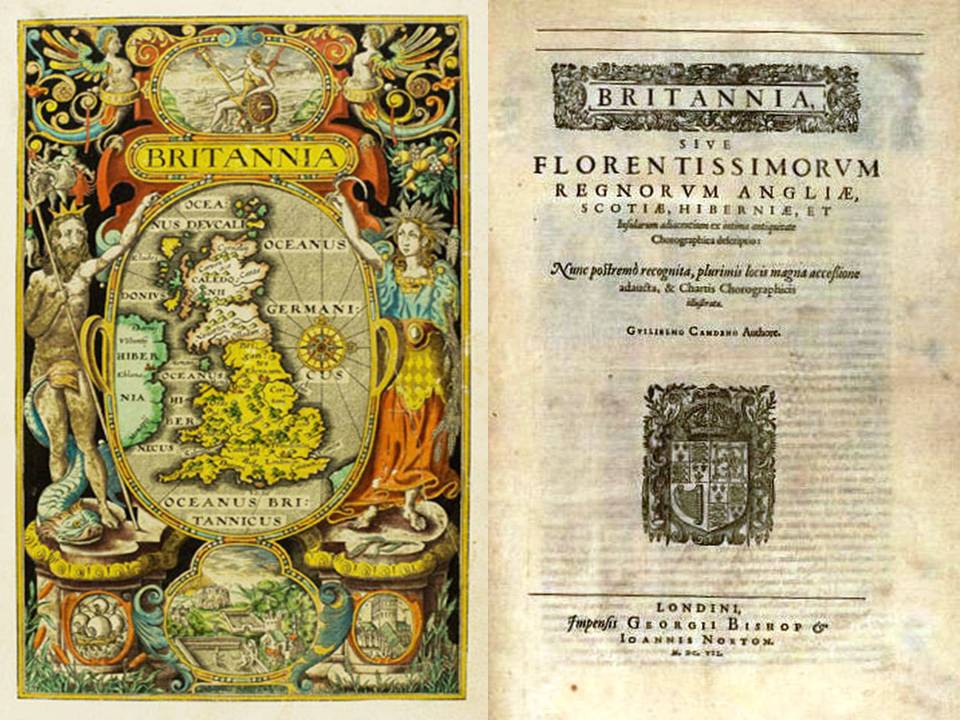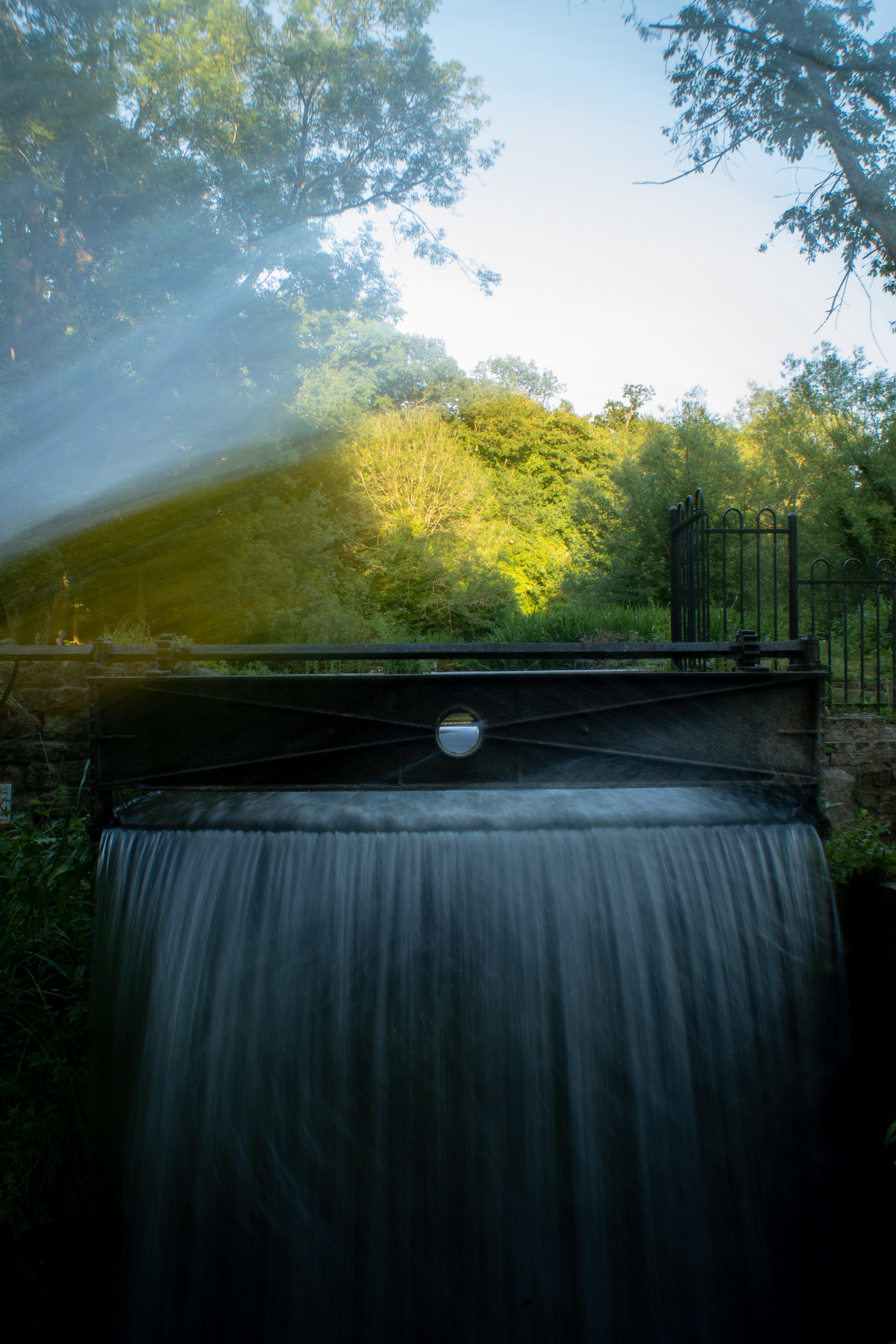|
Medway Watermills (lower Tributaries)
The River Medway and its tributaries and sub-tributaries have been used for more than 1,150 years as a source of power. There are over two hundred sites where the use of water power is known. Many different processes were performed by the use of water power:- corn milling, fulling, paper making, iron smelting, pumping water, making gunpowder, vegetable-oil extraction, and electricity generation. Today, there is just one watermill working for trade. Those that remain have mostly been converted. Such conversions include a garage, dwellings, restaurants, museums and a wedding venue. Some watermills are mere derelict shells, lower walls or lesser remains. Of the majority, there is nothing to be seen. A large number of tributaries feed into the River Medway. The tributaries that powered watermills will be described in the order that they feed in. The mills are described in order from source to mouth. Left bank and right bank are referred to as though the reader is facing downstream. Th ... [...More Info...] [...Related Items...] OR: [Wikipedia] [Google] [Baidu] |
River Medway
The River Medway is a river in South East England. It rises in the High Weald, East Sussex and flows through Tonbridge, Maidstone and the Medway conurbation in Kent, before emptying into the Thames Estuary near Sheerness, a total distance of . About of the river lies in East Sussex, with the remainder being in Kent. It has a catchment area of , the second largest in southern England after the Thames. The map opposite shows only the major tributaries: a more detailed map shows the extensive network of smaller streams feeding into the main river. Those tributaries rise from points along the North Downs, the Weald and Ashdown Forest. Tributaries The major tributaries are: * River Eden * River Bourne, known in the past as the Shode or Busty * River Teise, major sub-tributary River Bewl * River Beult * Loose Stream * River Len Minor tributaries include: * Wateringbury Stream * East Malling Stream * River Grom Former minor tributaries include the Old Bourne ... [...More Info...] [...Related Items...] OR: [Wikipedia] [Google] [Baidu] |
Polegate
Polegate is a town and civil parish in the Wealden District of East Sussex, England, United Kingdom.OS Explorer map Eastbourne and Beachy Head Scale: 1:25 000. Publisher:Ordnance Survey – Southampton B2 edition. Publishing Date:2009. It is located five miles (8 km) north of the seaside resort of Eastbourne and is part of the greater area of that town. Although once a railway settlement, its rail links were closed as part of the Beeching cuts. The 2011 census put the civil parish of Polegate at a population of 8,586, with 41.2% aged 65 and over. History Until the coming of the railways in the 1840s, Polegate was a small settlement within the parish of Hailsham. The Roman road from Pevensey to Lewes passed through here, and the turnpike between London and Eastbourne was developed in the 18th century; but it was the opening of the railway between Lewes and Hastings, with later branches to Eastbourne and Hailsham, that meant growth for Polegate. It became a significant j ... [...More Info...] [...Related Items...] OR: [Wikipedia] [Google] [Baidu] |
Water Turbine
A water turbine is a rotary machine that converts kinetic energy and potential energy of water into mechanical work. Water turbines were developed in the 19th century and were widely used for industrial power prior to electrical grids. Now, they are mostly used for electric power generation. Water turbines are mostly found in dams to generate electric power from water potential energy. History Water wheels have been used for hundreds of years for industrial power. Their main shortcoming is size, which limits the flow rate and head that can be harnessed. The migration from water wheels to modern turbines took about one hundred years. Development occurred during the Industrial revolution, using scientific principles and methods. They also made extensive use of new materials and manufacturing methods developed at the time. Swirl The word turbine was introduced by the French engineer Claude Burdin in the early 19th century and is derived from the Greek word "τύρβη" ... [...More Info...] [...Related Items...] OR: [Wikipedia] [Google] [Baidu] |
Paper
Paper is a thin sheet material produced by mechanically or chemically processing cellulose fibres derived from wood, Textile, rags, poaceae, grasses or other vegetable sources in water, draining the water through fine mesh leaving the fibre evenly distributed on the surface, followed by pressing and drying. Although paper was originally made in single sheets by hand, almost all is now made on large machines—some making reels 10 metres wide, running at 2,000 metres per minute and up to 600,000 tonnes a year. It is a versatile material with many uses, including printing, painting, graphics, signage, design, packaging, decorating, writing, and Housekeeping, cleaning. It may also be used as filter paper, wallpaper, book endpaper, conservation paper, laminated worktops, toilet tissue, or currency and security paper, or in a number of industrial and construction processes. The papermaking process developed in east Asia, probably China, at least as early as 105 Common Era, CE, by t ... [...More Info...] [...Related Items...] OR: [Wikipedia] [Google] [Baidu] |
Millstones
Millstones or mill stones are stones used in gristmills, for grinding wheat or other grains. They are sometimes referred to as grindstones or grinding stones. Millstones come in pairs: a convex stationary base known as the ''bedstone'' and a concave ''runner stone'' that rotates. The movement of the runner on top of the bedstone creates a "scissoring" action that grinds grain trapped between the stones. Millstones are constructed so that their shape and configuration help to channel ground flour to the outer edges of the mechanism for collection. The runner stone is supported by a cross-shaped metal piece ( millrind or rynd) fixed to a "mace head" topping the main shaft or spindle leading to the driving mechanism of the mill (wind, water (including tide) or other means). History The earliest evidence for stones used to grind food is found in northern Australia, at the Madjedbebe rock shelter in Arnhem Land, dating back around 60,000 years. Grinding stones or grindsto ... [...More Info...] [...Related Items...] OR: [Wikipedia] [Google] [Baidu] |
Paper Mill
A paper mill is a factory devoted to making paper from vegetable fibres such as wood pulp, old rags, and other ingredients. Prior to the invention and adoption of the Fourdrinier machine and other types of paper machine that use an endless belt, all paper in a paper mill was made by hand, one sheet at a time, by specialized laborers. History Historical investigations into the origin of the paper mill are complicated by differing definitions and loose terminology from modern authors: Many modern scholars use the term to refer indiscriminately to all kinds of Mill (grinding), mills, whether powered by humans, Horse mill, by animals or Watermill, by water. Their propensity to refer to any ancient paper manufacturing center as a "mill", without further specifying its exact power source, has increased the difficulty of identifying the particularly efficient and historically important water-powered type. Human and animal-powered mills The use of human and animal powered mills w ... [...More Info...] [...Related Items...] OR: [Wikipedia] [Google] [Baidu] |
William Camden
William Camden (2 May 1551 – 9 November 1623) was an English antiquarian, historian, topographer, and herald, best known as author of ''Britannia'', the first chorographical survey of the islands of Great Britain and Ireland, and the ''Annales'', the first detailed historical account of the reign of Elizabeth I of England. Early years Camden was born in London. His father Sampson Camden was a member of The Worshipful Company of Painter-Stainers. He attended Christ's Hospital and St Paul's School, and in 1566 entered Oxford ( Magdalen College, Broadgates Hall, and finally Christ Church). At Christ Church, he became acquainted with Philip Sidney, who encouraged Camden's antiquarian interests. He returned to London in 1571 without a degree. In 1575, he became Usher of Westminster School, a position that gave him the freedom to travel and pursue his antiquarian researches during school vacations. ''Britannia'' In 1577, with the encouragement of Abraham Ortelius, Camden ... [...More Info...] [...Related Items...] OR: [Wikipedia] [Google] [Baidu] |
William Lambarde
William Lambarde (18 October 1536 – 19 August 1601) was an English antiquarian, writer on legal subjects, and politician. He is particularly remembered as the author of ''A Perambulation of Kent'' (1576), the first English county history; ''Eirenarcha'' (1581), a widely read manual on the office and role of justice of the peace; and ''Archeion'' (completed c.1591, though not published until 1635), a discourse that sought to trace the Anglo-Saxon roots of English common law, prerogative and government. Early life, education and career William Lambarde was born in London on 18 October 1536. His father John Lambarde was a draper who served three times as Master of the Drapers' Company, an alderman and a sheriff of London. The Manor of Westcombe in Greenwich, demolished in 1725, was their family home... In 1556, Lambarde was admitted to Lincoln's Inn, where he studied Law. In 1568, with Laurence Nowell's encouragement, he published a collection of Anglo-Saxon laws, ''Archa ... [...More Info...] [...Related Items...] OR: [Wikipedia] [Google] [Baidu] |
Tovil
Tovil is a civil parish in the Borough of Maidstone, in Kent in the South East of England. It is a mixture of residential and industrial zoning, with an increase in commercial usage towards the centre of Maidstone, and more arable use on the outskirts. History Tovil is mentioned in the Cecil Papers with the leasing of a tenement at Tovil to Thomas Peene, commencing at Michaelmas, 1628. Tovil has a history of paper mills on the Loose Stream near the River Medway, which ceased operation in the 1980s. These included Great Ivy Mill, Hayle Mill, Upper Tovil Mill, Lower Tovil Mill and Bridge Mill. These and other mills located along the Loose Stream which flows through Tovil were formerly used for fulling, corn and in one case gunpowder. The Tovil Bridge connects Tovil to Barming over the Loose Stream and the Medway. The church of St Stephen was built in around 1840. The architect was John Whichcord Snr. It was built of ragstone ashlar in the Early English style but demolishe ... [...More Info...] [...Related Items...] OR: [Wikipedia] [Google] [Baidu] |
Loose Stream
The Loose Stream sometimes called the River Loose or Langley Stream is a tributary of the River Medway notable for the number of watermills that it powered in its short length. It rises in Langley, flows through Boughton Monchelsea, Loose and enters the Medway at Tovil. The river valley is deep sided, and there is much evidence of the paper and wool trades which once flourished here: the stream has been dammed in many places, resulting in many mill ponds. Watermills Lambarde mentions thirteen fulling mills and one corn mill. Camden gives thirteen fulling mills. By c.1715 the Kentish cloth trade has declined, and Harris only mentions two fulling mills and one paper mill. Owing to the purity of the stream, paper making rose in importance in the nineteenth century. Brishing Court mill, Boughton Monchelsea TQ 779 515 The ancient manor of Brishing Court may have been the site of a mill. There is little evidence supporting the claim to a mill, which would have been demol ... [...More Info...] [...Related Items...] OR: [Wikipedia] [Google] [Baidu] |
Teston
Teston /ˈtiːstən/ The Place Names of Kent,Judith Glover,1976,Batsford. or /ˈtiːsən/ BBC Pronouncing Dictionary of British Names — is a village in the Maidstone District of Kent, England. It is located on the A26 road out of Maidstone, four miles (6.4 km) from the town centre. There is a narrow stone bridge over the River Medway here. History Barham Court is the 'big house'. It has now been converted into offices and apartments. It was once the home of Randall Fitz Urse, one of the knights who murdered Thomas Becket in 1170. It passed to the de Berham family now called the Barhams, and then the Boteler (or Butler) family. They were Royalists, William Butler was imprisoned for supporting the Kentish Royalist Petition 1642, which indirectly led to the Battle of Maidstone 1648. When Edward Hasted visited in the 18th century, it was owned by the Bouveries. After that it passed to the Charles Middleton, 1st Baron Barham. Barham Court has been recognised by hi ... [...More Info...] [...Related Items...] OR: [Wikipedia] [Google] [Baidu] |
West Farleigh
West Farleigh is a village and civil parish four miles (6km) southwest of Maidstone in the county of Kent. The parish has a population of approximately 450, and is bounded by the civil parishes of East Farleigh, Hunton, Yalding, and over the River Medway by Wateringbury, Teston and Barming. The village boasts three pubs; the White House, The Tickled Trout and The Good Intent. Adjacent to the church is the village cricket ground. The village is twinned with the northern German village of Ringstedt, near Bremerhaven Bremerhaven (, , Low German: ''Bremerhoben'') is a city at the seaport of the Free Hanseatic City of Bremen, a state of the Federal Republic of Germany. It forms a semi-enclave in the state of Lower Saxony and is located at the mouth of the R .... The sports club runs a football section involving; two senior Saturday sides, the first team in the Kent County League, the reserve team in the Sevenoaks and District Football League, a veterans' side, and five ju ... [...More Info...] [...Related Items...] OR: [Wikipedia] [Google] [Baidu] |
